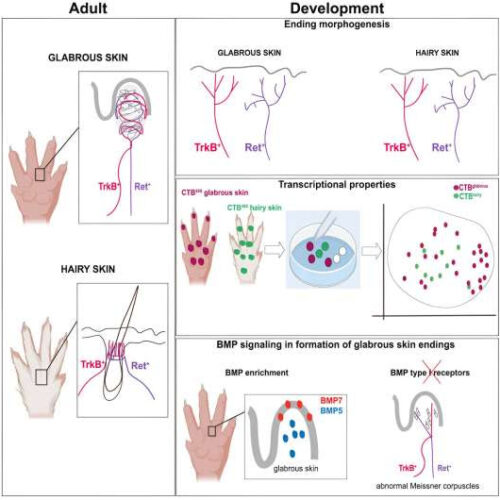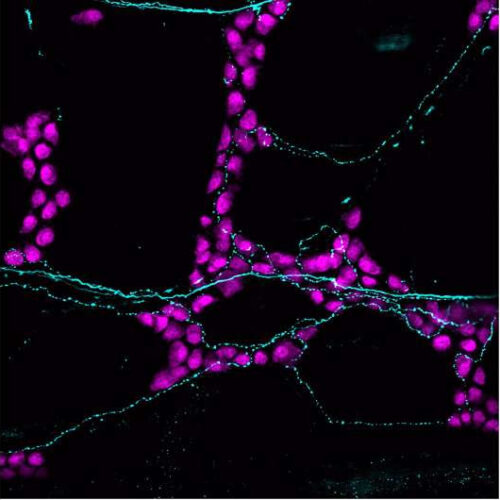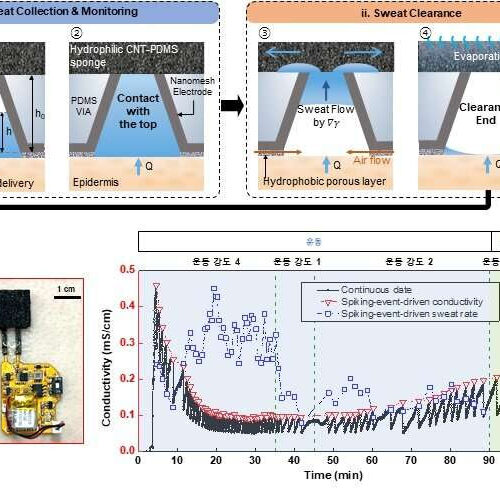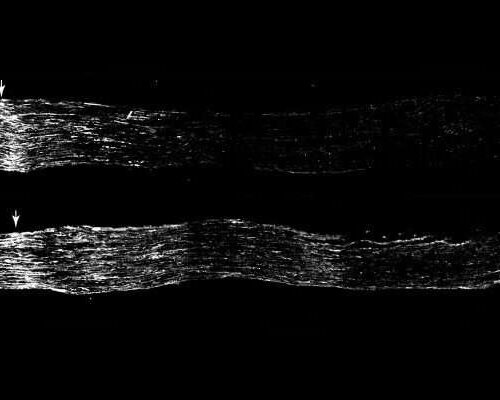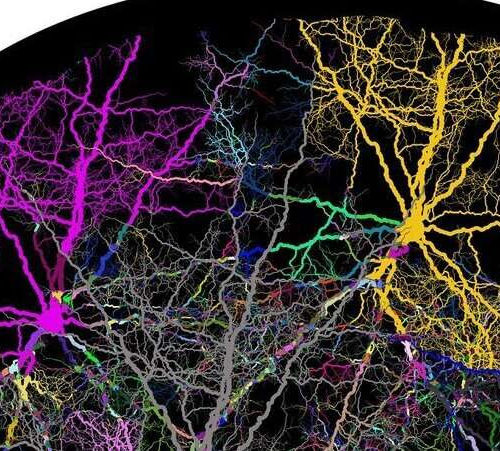by Christy Brownlee, Harvard Medical School Graphical Abstract. Credit: Developmental Cell (2023). DOI: 10.1016/j.devcel.2023.07.020Nerve cells that sense touch grow the appropriate endings for hairy or hairless skin based on cues from the skin itself, rather than through predetermined programming, according to research led by Harvard Medical School scientists and published Aug. 21 in Developmental Cell....
Tag: <span>sensory neurons</span>
How sensory neurons impact the gut
by The Scripps Research Institute Researchers showed that PIEZO2 receptors in sensory neurons control the rate of gut transit. In this fluorescently stained microscopy image, nerve endings stemming from the dorsal root ganglia that express the PIEZO2 protein are shown in cyan, and the nuclei of enteric neurons are shown in magenta. Credit: M. Rocio Servin-Vences (Scripps Research). Gastrointestinal and...
Development of a low-power, long-term sweat sensor patch that imitates sensory neurons
by National Research Council of Science & Technology Structure and operating principle of the newly developed sweat sensor patch (top). Spike event-based wireless sweat monitoring clinical study using sweat sensor patch (bottom). Credit: Korea Institute of Science and Technology Human sweat contains chemical information including blood metabolites, ion concentrations, and nutrients. Monitoring this information using a wearable...
Drug helps sensory neurons regrow in the mouse central nervous system
by Washington University in St. Louis Sensory neurons regrow more after injury when treated with the drug fenofibrate (lower panel) than when given a placebo (top panel; arrows indicate site of injury). Researchers at Washington University School of Medicine in St. Louis have discovered that an FDA-approved drug acts on support cells in the central nervous...
A link between sensory neurons activation and the immune system
By Ecole Polytechnique Federale de Lausanne Scientists at EPFL, ETHZ and Harvard Medical School/Boston Children’s Hospital have developed an implantable technology that enabled the discovery of an interaction between sensory neurons and immune cells. Pain is a protective mechanism, alerting us to danger by generating an unpleasant sensation. The warning message is carried to the spinal...
Tiny, implantable device uses light to treat bladder problems
A team of neuroscientists and engineers has developed a tiny, implantable device that has the potential to help people with bladder problems bypass the need for medication or electronic stimulators. This CT scan of a rat shows a small device implanted around the bladder. The device — developed by scientists at Washington University School of Medicine in St. Louis, the University of Illinois and Northwestern University — uses light....

